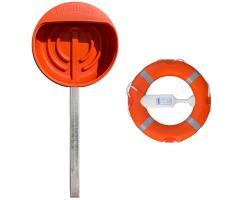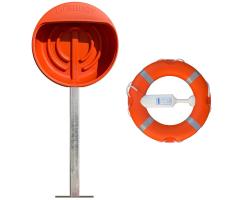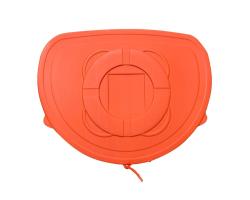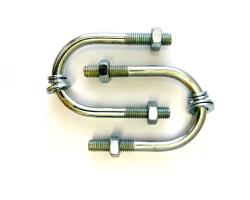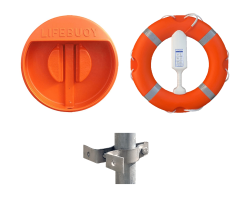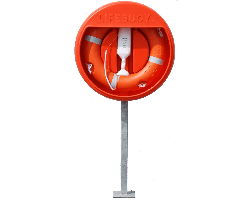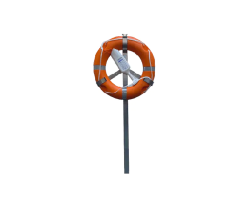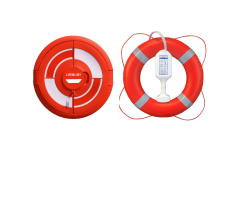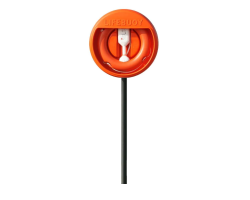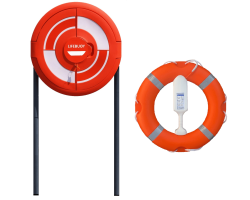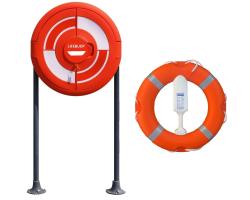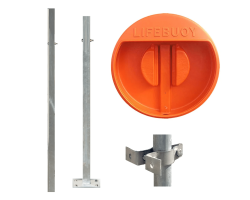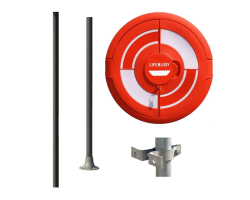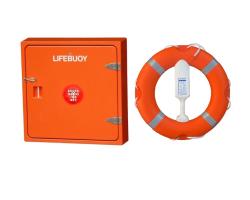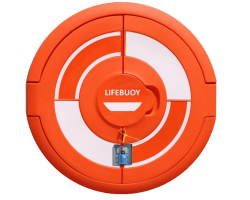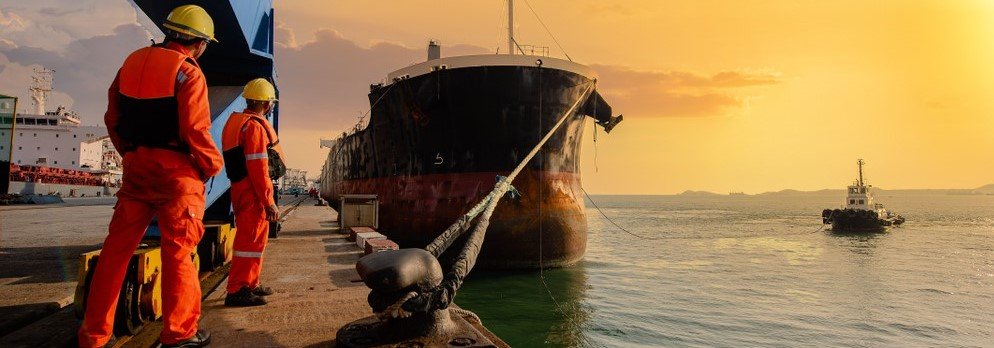Installing Lifebuoy Equipment: National Water Safety Forum (NWSF) Guidelines
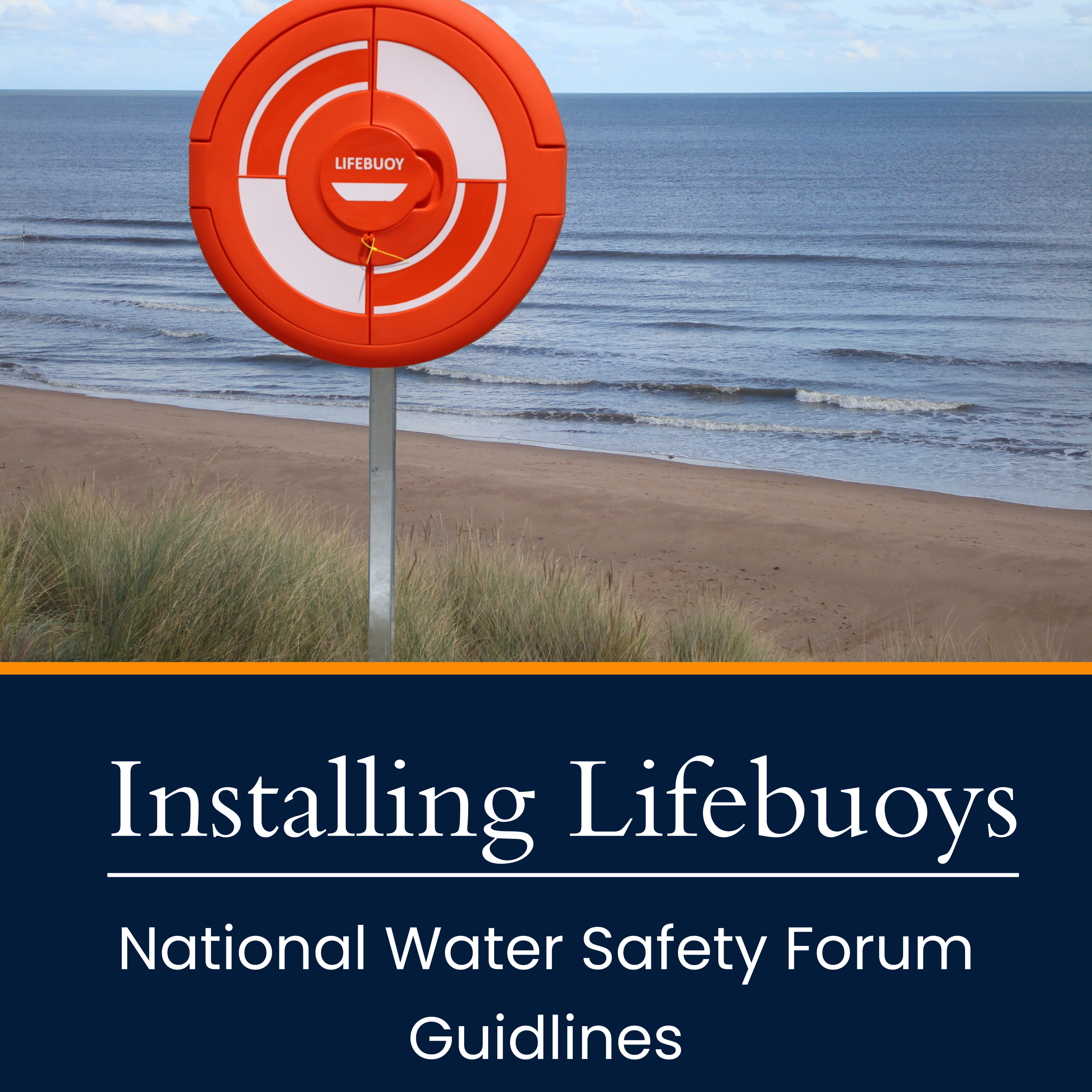
Introduction: Ensuring Waterside Safety with NWSF Guidelines for Installing Life-saving Equipment
Making sure areas near water are safe is really important, especially when we're talking about putting in life-saving gear like lifebuoys and their setups. Following the rules set by safety organisations is crucial.
Before installing any equipment, it's very important to carefully assess potential risks, such as the likelihood of drowning accidents, the presence of strong currents, deep waters, blind sports, and any other hazards that could pose a danger to individuals near the water. This helps us see any dangers and stop accidents from happening in the water.
In this article, we'll dive into why it's crucial to follow these rules. We'll focus on important aspects such as where to place your lifebuoys and lifebuoy equipment, how to maintain the equipment properly, and why having the right setup is vital during emergencies. By sticking to these rules and being cautious, whether you're a holiday home owner, team leader, commercial manager, or surveyor, you can ensure that areas near water are safer for everyone.
Let's prioritise water safety by following these guidelines set out by the National Waterside Safety Forum for installing life-saving equipment, such as lifebuoys.
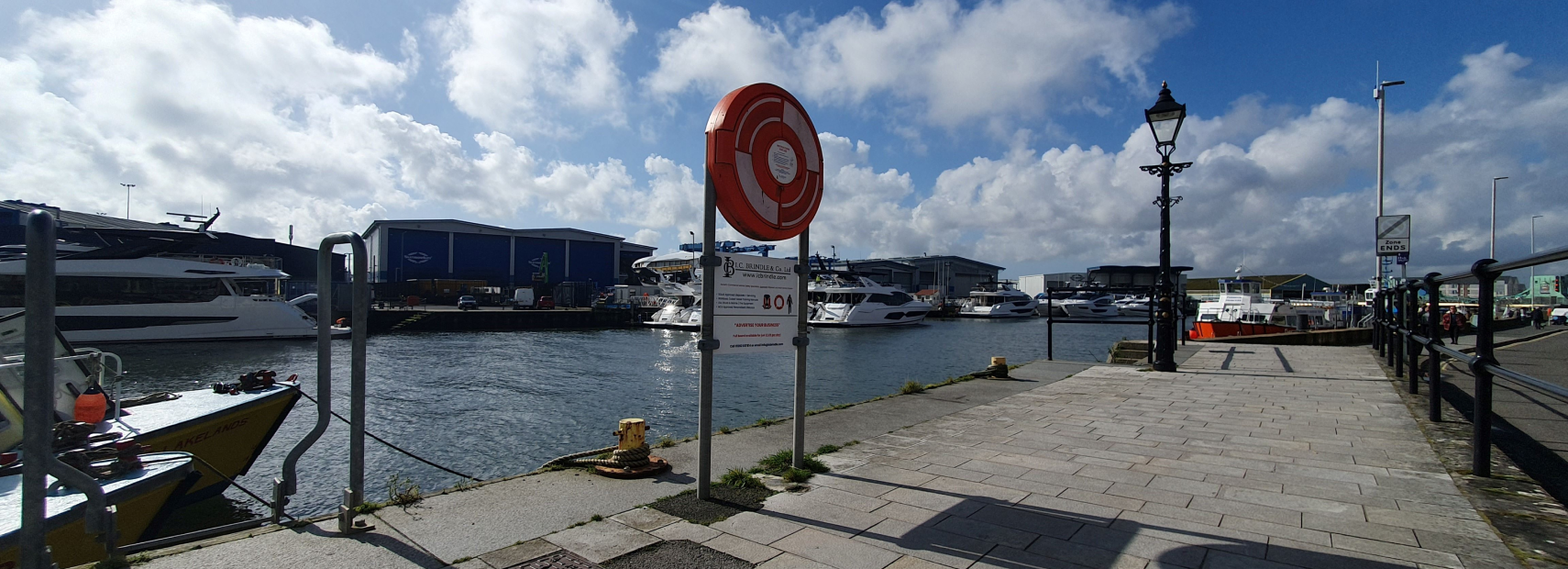
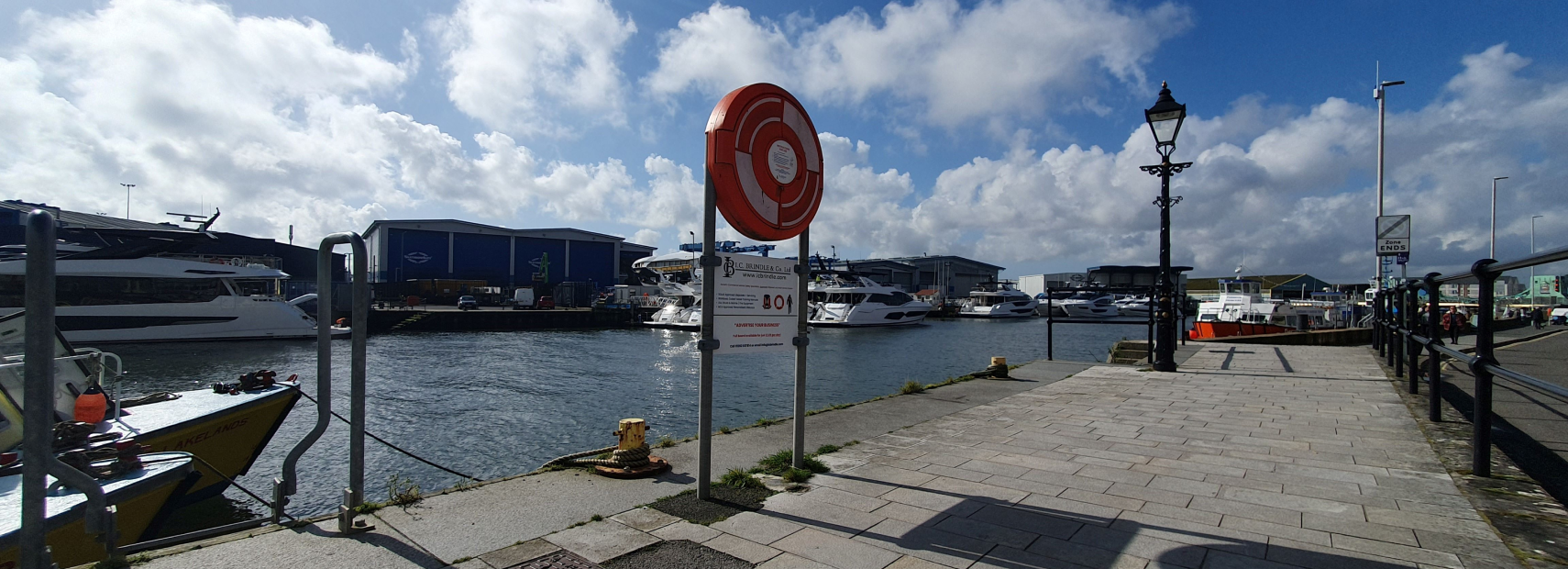
Guideline 1: Strategic Positioning of your Lifebuoys
Ensuring that lifebuoys are strategically positioned is crucial for effective water safety measures.
- Importance of Strategic Positioning: Placing lifebuoys in easily accessible areas ensures that they can be reached quickly during emergencies. Whether it's along a shoreline, near swimming areas, or on boats, strategic placement increases the chances of a timely rescue.
- Emphasis on High Visibility: Opting for bright colors like red or yellow for lifebuoys enhances their visibility, even in low light or adverse weather conditions. This high visibility ensures that the lifebuoys stand out, making them easy to spot for both potential rescuers and individuals in distress.
- Facilitating Quick Rescue Operations: Visible lifebuoys significantly expedite rescue operations by providing clear markers for assistance. In emergency situations, every second counts, and easily visible lifebuoys can make all the difference in swiftly locating and aiding those in need.
Strategically positioning lifebuoys in easily accessible areas with high visibility is paramount for enhancing their effectiveness in water safety measures and ultimately ensuring the safety of individuals near water bodies.
Firstly, choosing easily accessible locations ensures that lifebuoys are readily available for immediate use during emergencies. Placing them in areas where people frequently gather or engage in water activities, such as beaches, swimming pools, or waterfront promenades, increases the likelihood of timely intervention in case of an emergency. This accessibility allows both trained rescuers and bystanders to quickly reach the lifebuoys and deploy them to individuals in distress without delay, potentially saving lives.
Moreover, positioning lifebuoys in areas with high visibility enhances their effectiveness by making them easily identifiable, even from a distance. Brightly colored lifebuoys and lifebuoy housing sets placed in conspicuous locations, such as near lifeguard stations or prominent landmarks, serve as visible markers of maritime safety, reminding individuals of the presence of water hazards and the importance of preparedness. This high visibility not only makes sure quick deployment of your lifesaving gear during emergencies but also acts as a deterrent, encouraging safer behavior around water bodies.
Additionally, strategic positioning of lifebuoys contributes to community wellfare by fostering a culture of water safety awareness. Placing lifebuoys in prominent locations sends a powerful message about the community's commitment to safeguarding its residents and visitors, espciallty when working alongside local council to install this equipment. This nit only promotes proactive risk management but encourages individuals to take personal responsibility for their safety near water, knowing that life-saving equipment is readily available and easily accessible.
Guideline 2: Optimal Height of 1.7m
The recommended maximum height of 1.7 metres for mounting lifebuoys plays a vital role in enhancing accessibility and ensuring effective rescue operations.
- Recommended Maximum Height: Installing lifebuoys at a maximum height of 1.7 meters is essential for several reasons. Firstly, it ensures that the lifebuoys are within easy reach of potential rescuers, even in emergency situations where time is of the essence. Additionally, maintaining a consistent height standard across installations helps streamline rescue efforts and ensures uniformity in accessibility.
- Easy Accessibility for Rescuers: By adhering to the recommended maximum height, lifebuoys become easily accessible to a wide range of individuals, regardless of their height or physical capabilities. This accessibility is critical for empowering bystanders to assist in rescue operations promptly.
Mounting lifebuoys at an optimal height of 1.7M serves as a critical aspect of water safety, offering several benefits that enhance their effectiveness in emergency situations. Firstly, this height ensures easy accessibility for potential rescuers, as it is within reach for most individuals, including adults and older children. By positioning lifebuoys at this height, people can quickly access them without the need for additional tools or assistance, expediting the response time during emergencies.
Mounting lifebuoy equipment at this recommended height maximises their visibility, making them easily identifiable even from a distance. This high visibility is essential, especially in chaotic or low-visibility conditions such as a busy pool area, or your local beach during peak holiday times. Doing so helps rescuers locate and deploy lifebuoys swiftly to aid individuals in distress. Additionally, the clear and easily accessible placement of lifebuoys at the reccomended optimal height of 1.7m (around 5ft 7 inches) serves as a visual deterrent, reminding people of the potential hazards of the water and encouraging them to exercise caution—escpecially when the sign is marked with warning signage, rules and instructions.
Moreover, in emergency situations every second counts! So, having lifebuoys mounted at the optimal height ensures a prompt and effective response by whoever has to make the rescue. Rescuers can quickly retrieve the lifebuoys and deploy them to individuals in distress in good time, significantly improving the chances of a successful rescue. Which means, by adhering to the recommended height guidelines for mounting lifebuoys, we are not only creating safer waterside environments, but also ensuring that the risk of drowning accidents is minimised—making sure that safety of all individuals near the water is prioritised.
Guideline 3: Regular Maintenance of Lifebuoy and Lifebuoy Housing
Regular maintenance of lifebuoys and their housings is paramount to ensure their effectiveness during rescue operations.
- Importance of Conducting Regular Inspections: Regular inspections are essential to identify any signs of wear, damage, or tampering with lifebuoys and their housings. By inspecting these components regularly, potential issues can be detected early, allowing for prompt corrective action to be taken. This proactive approach helps maintain the integrity and functionality of the life-saving equipment, ensuring it remains reliable when needed most.
- Highlighting the Significance of Immediate Replacement: In the event of wear, damage, or tampering, immediate replacement of lifebuoys or their housings is crucial. Any compromise to the structural integrity of the equipment can significantly impact its effectiveness during rescue situations. By promptly replacing compromised components, the reliability of the life-saving equipment is preserved, providing assurance that it will perform as intended in emergency scenarios.
Regular maintenance of your lifebuoys, including thorough inspections and immediate replacement of compromised components such as locking mechanisms, is essential to ensure the effectiveness of lifebuoys and their housings to perform as they should during rescue events or waterside emergencies. By prioritizing maintenance, you can ensure that these critical pieces of life-saving equipment remain reliable safety assets in safeguarding the lives of friends, family, and the public near bodies of water.
Regular inspections will help you identify any wear, damage, or tampering that could compromise the functionality of the lifebuoys, allowing for prompt corrective action to be taken. Immediate replacement of compromised components is crucial to maintaining the integrity and effectiveness of the equipment, ensuring it remains reliable and ready for use when needed most, like during a rescue situation! By adhering to these maintenance practices, you can uphold the reliability, safety, and effectiveness of your life-saving equipment, providing peace of mind and ensuring the highest level of protection for all those who may encounter water-related risks.
Guideline 4: Considered Lifebuoy Placement (100m and 50m Spacing Rule)
Determining the placement and spacing of life-saving equipment is crucial for effective water safety measures. By carefully assessing the risks and identifying high-risk areas, we can strategically place life-saving equipment such as lifebuoys to address potential hazards effectively. Additionally, spacing life-saving equipment at recommended intervals ensures that individuals in distress are never too far away from assistance, facilitating quick response times and increasing the likelihood of successful rescue operations.
- Importance of Determining Placement: Identifying the placement of life-saving equipment based on identified risks is essential to ensure that potential hazards are adequately addressed. By strategically placing lifebuoys in areas where drowning accidents are more likely to occur, such as near swimming areas or along stretches of open water, we can maximise their effectiveness in emergency situations.
- Recommended Spacing for Accessibility: The recommended spacing of lifebuoys at intervals of 100 metres under standard conditions is vital to ensure accessibility during emergencies. This spacing ensures that potential rescuers are never more than 50 metres away from life-saving equipment, enabling swift response times in critical situations. By adhering to this spacing guideline, we can minimise the distance individuals need to travel to access lifebuoys, thereby increasing the likelihood of successful rescue operations.
By focusing on where to place lifebuoys are placed and how far apart to space them based on identified risks is vital for ensuring they effectively protect people near water. By placing lifebuoys in areas where accidents are more likely to happen, like beaches or poolsides, we can make sure they're easily accessible during emergencies. Following recommended spacing guidelines by the National Water Safety Organisation, (again, typically around 100 metres apart), ensures there's enough coverage along the water's edge. This means people won't have to travel far to reach a lifebuoy if they need it.
Following these guidlines and carefully planning where to put lifebuoys and how far apart they should be, you can improve water safety and reduce the risks associated with being near water.
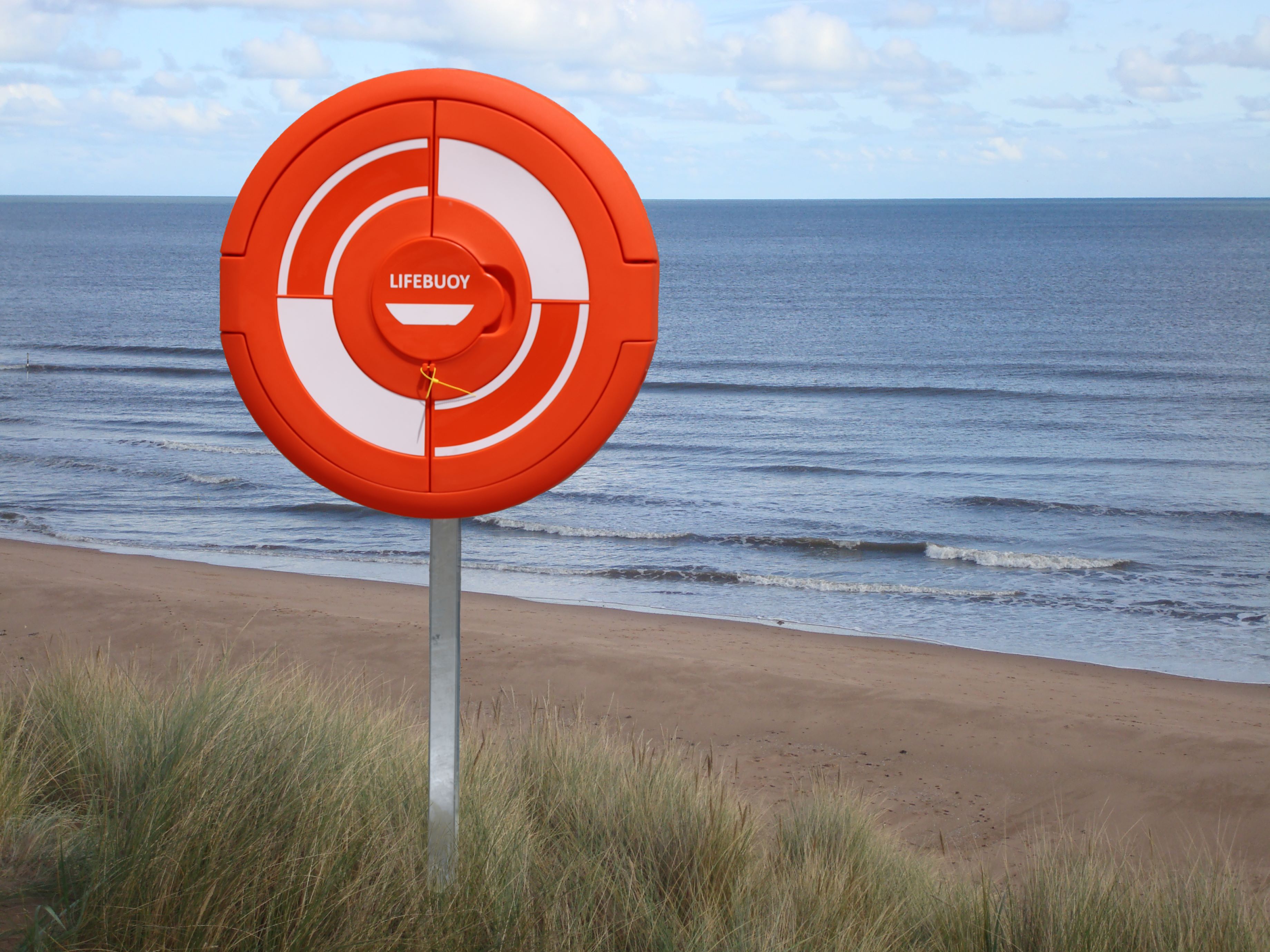
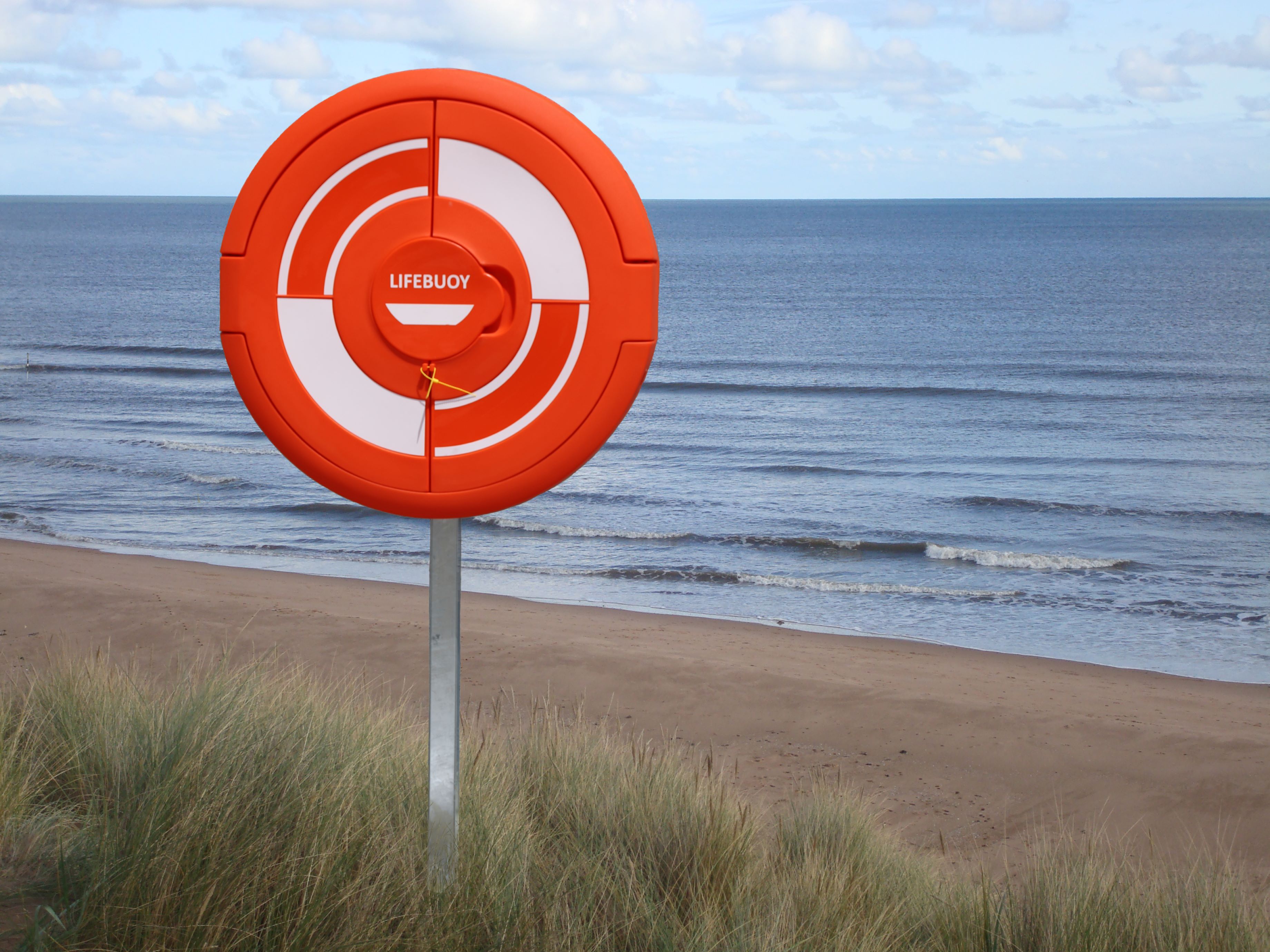
Conclusion:
In conclusion, adhering to national waterside safety guidelines for installing life-saving equipment is paramount for ensuring the safety of individuals near water bodies. By strategically positioning, mounting at optimal heights, conducting regular maintenance, and thoughtfully placing life-saving equipment, we can maximize its effectiveness in emergency situations.
For further guidance, we encourage you to consult the comprehensive guidelines provided by the National Water Safety Forum in their FAQS section via the Advice Hub! Should you require assistance with installing lifebuoy equipment, please don't hesitate to reach out to us for support by emailing us at info@icbrindle.com, or calling us directly on +44 (0)1202 657814.
Stay safe,
- I.C. Brindle










